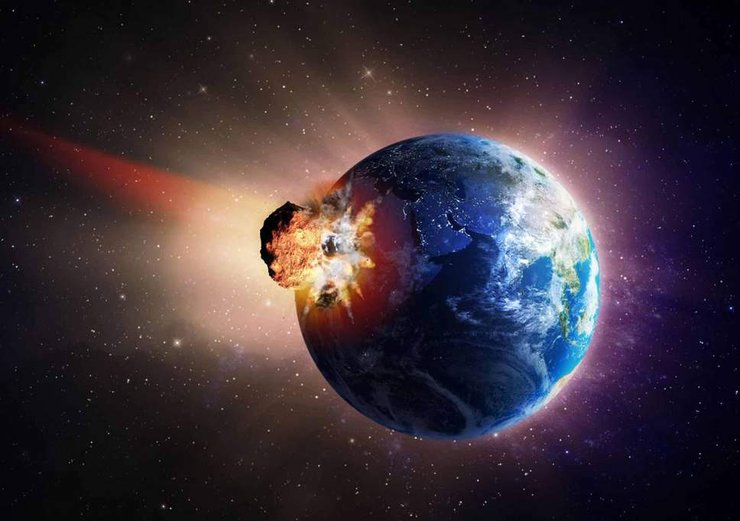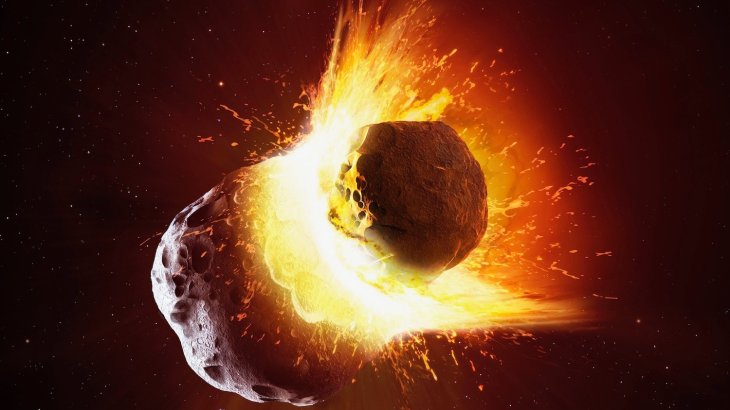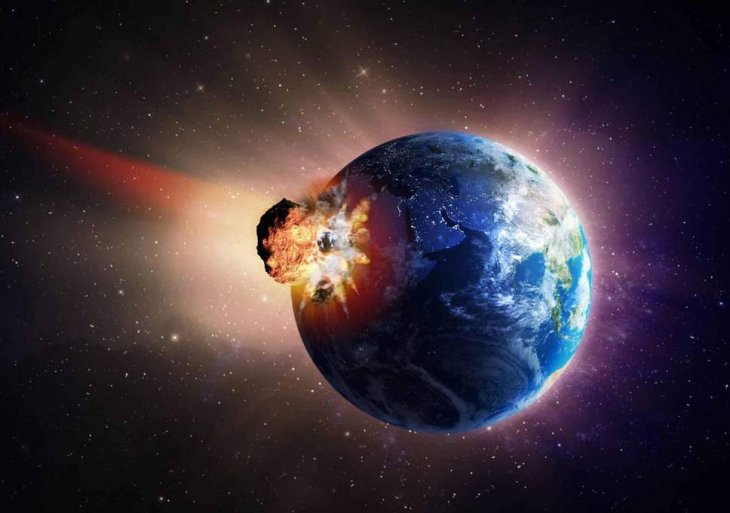Nuking Asteroids Coming To Earth Is Harder Than We Thought
Indira Datta - Mar 24, 2019

To destroy such small meteorites is a really difficult task because we not only need to increase the amount of firepower that causes them to explode.
- Scientists Discover That Earth's Atmosphere Stretches Beyond The Moon
- Galaxies Without Dark Matter Are Real, Two New Studies Confirm
- Asteroids Are Harder to Destroy Than We Expected
As we thought, to prevent asteroids from charging towards Earth, we just need to shoot missiles to destroy them. But according to recent research, it is not so simple like that.
Icarus magazine published a study showing that destroying an asteroid is more difficult than we thought. Asteroids, damaged by hitting other asteroids or by us shooting nuclear missiles from the ground to prevent them from crashing into our planet, if their cores are still intact, they will be able to restructure through their gravity.

According to previous conclusions, when a large asteroid hits a small asteroid, it will be completely destroyed and cracks will cause them to be destroyed more quickly. However, the new modeling funded by NASA has shown the opposite result.
This new study is conducted in the United States by scientists from Johns Hopkins University including KT Ramesh and Charles El Mir with Derek Richardson from the University of Maryland. Through focusing on more fine-grain analysis, scientists have discovered differences from previous research.
Basically, the difference comes from the way meteorites respond to energy impacts. To analyze this process, the researchers used Cameron's lab scale to simulate the happenings in reality. The asteroids used for experiments are simulated with rocks roughly the size of the human fist.
However, asteroids that have a magnitude big enough to be concerned can be as big as Berlin.
To destroy such small meteorites is a really difficult task because we not only need to increase the amount of firepower that causes them to explode. El Mir and the scientists said that we must grasp the power and speed at which the cracks spread.
They used an analytical protocol to find out what factors needed to solve this problem. This is called the Tonge-Ramesh model, where the researchers re-run the collected data. They simulated a 1-kilometer asteroid to strike a 25-kilometer asteroid at a speed of 5km/s and the results they obtained were not very satisfactory.
El Mir said, his team previously thought that larger asteroids were more likely to be destroyed because larger objects often have more flaws.
It seems that it is not accurate, because recent research he found shows that asteroids are much stronger than we think and need more energy to be completely destroyed.

In the modeling, the impact occurred in 2 phases. Larger meteorites carry millions of cracks after just a second of collisions with smaller ones. Cracks travel through the asteroid and cause the parts of the meteor to become wavy. At the same time, it formed a crater.
Although it creates cracks, the force could not completely destroy the asteroid and left the core unharmed. Previous studies did not consider the behavior of cracks but instead.
A degree of gravity of asteroids fragments that have been calculated by scientists in the previous study showing how much they continue to pull together and also determine how far apart they are. From there they created enough force to destroy them.
With the recent discovery, the researchers claim, when larger asteroids still retain its core after the collision, it still has enough gravity to drag the fragments of it again and becomes bigger.
For future space operators, this will be valuable information showing that they have many opportunities to gather high-value minerals from the debris of asteroids without having to go too far from our planet.
In contrast, the defense personnel and astronomers are worried about large asteroids heading towards our home planet.
El Mir said, it sounds vague like science fiction, but the collision between asteroids will be a great research source for scientists.
Because we still have to find solutions to prevent when an asteroid goes straight to our planet. Will we push it in another direction or completely destroy it? And how much force do we need to push it without breaking them into many parts?

Ramesh, one of the scientists in the study, said that our Earth is also under the influence of small meteorites, typically Chelyabinsk in the previous years. Although these questions are now set to be academically resolved, they are only a matter of time when we truly face the real threat of asteroids. Now, good ideas need to be put in place so that when that time comes, we will have appropriate and effective ways to deal with it.
Featured Stories

Features - Jul 01, 2025
What Are The Fastest Passenger Vehicles Ever Created?

Features - Jun 25, 2025
Japan Hydrogen Breakthrough: Scientists Crack the Clean Energy Code with...

ICT News - Jun 25, 2025
AI Intimidation Tactics: CEOs Turn Flawed Technology Into Employee Fear Machine

Review - Jun 25, 2025
Windows 11 Problems: Is Microsoft's "Best" OS Actually Getting Worse?

Features - Jun 22, 2025
Telegram Founder Pavel Durov Plans to Split $14 Billion Fortune Among 106 Children

ICT News - Jun 22, 2025
Neuralink Telepathy Chip Enables Quadriplegic Rob Greiner to Control Games with...

Features - Jun 21, 2025
This Over $100 Bottle Has Nothing But Fresh Air Inside

Features - Jun 18, 2025
Best Mobile VPN Apps for Gaming 2025: Complete Guide

Features - Jun 18, 2025
A Math Formula Tells Us How Long Everything Will Live

Features - Jun 16, 2025
Comments
Sort by Newest | Popular